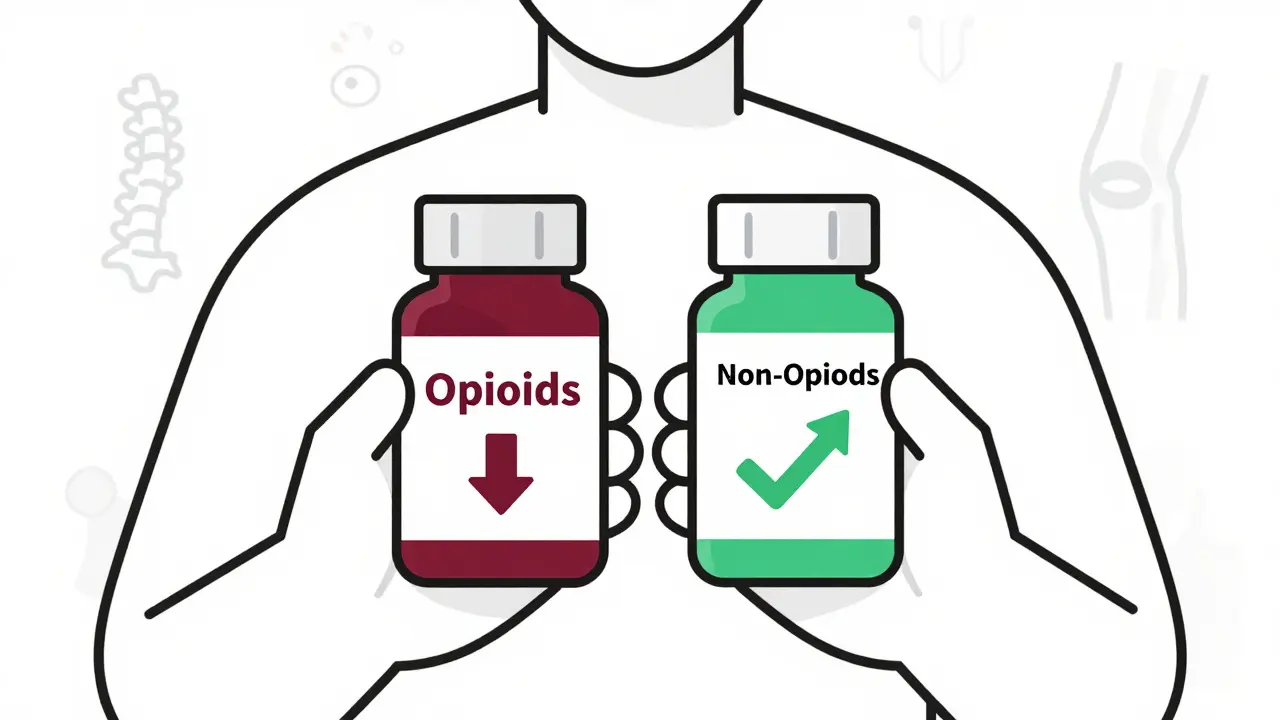Feeling stuck with prescription opioids? You’re not alone. Many people are looking for pain relief that doesn’t come with the heavy side‑effects and addiction risk of opioids. Below you’ll find a quick guide to the most useful alternatives, how they work, and what to keep in mind when you try them.
First up, over‑the‑counter (OTC) meds like ibuprofen, naproxen, and acetaminophen. They’re cheap, easy to find, and work well for mild to moderate aches. Just follow the label and talk to a pharmacist if you have liver or kidney concerns.
Topical treatments are another solid choice. Creams or patches that contain menthol, lidocaine, or capsaicin can numb the area and let you stay active without swallowing pills. They’re especially handy for joint pain or sore muscles.
If you prefer something natural, herbs such as bromelain (found in pineapple), wintergreen oil, and bromelain‑rich supplements have anti‑inflammatory properties. Studies show they can cut down swelling and make everyday tasks easier. Start with a low dose, watch for any stomach upset, and check with your doctor if you’re on blood thinners.
Prescription non‑opioid drugs like gabapentin, duloxetine, or certain muscle relaxers are often used when pain comes from nerves or chronic conditions. They need a doctor’s order, but they avoid the high dependency potential of opioids.
Physical therapy, yoga, and low‑impact exercise (think swimming or walking) may not sound like a “pill,” but they boost endorphins and strengthen the body, reducing the need for strong meds. A short, regular routine can make a big difference in pain perception.
Start by identifying why you need pain relief. Is it an acute injury, arthritis, nerve pain, or post‑surgical discomfort? Different causes respond better to different tools. For a sprained ankle, a topical gel plus rest works well. For chronic lower‑back pain, a mix of NSAIDs, physical therapy, and maybe a low‑dose antidepressant often helps.
Check your health history. Some non‑opioid meds can interact with heart drugs, blood thinners, or diabetes meds. Always let your prescriber know about any supplements you take, because natural doesn’t always mean safe for everyone.
Cost matters, too. OTC drugs and basic supplements are usually cheap. Physical therapy may be covered by insurance, but some people find community‑run classes or online videos a budget‑friendly alternative.
If you’re dealing with opioid addiction or you’re pregnant, the stakes are higher. Talk to a specialist right away. Programs that combine counseling, medication‑assisted treatment, and safe tapering plans give the best chance of a smooth transition away from opioids.
Finally, give any new approach a few weeks before judging its effectiveness. Pain relief can be a trial‑and‑error process, and the most successful plan often mixes several methods.
Bottom line: there are plenty of opioid alternatives that can keep you moving, sleeping, and feeling good without the heavy risks. Pick an option that fits your condition, health profile, and budget, and keep an open line with your healthcare provider. You deserve relief that works without carving up your life.

Opioids aren't the best choice for most chronic pain. New research shows non-opioid options like NSAIDs and Journavx work just as well - with far fewer risks of addiction, overdose, and heart damage.
Read More
Looking for something other than hydrocodone for pain? This article breaks down practical, real-world options that you can actually use—like physical therapies and holistic treatments. It explores the pros, cons, and real truths about sticking with non-opioid options. You'll get a clear sense of whether these alternatives fit your life and your pain level. If you want straightforward answers about ditching hydrocodone, this is for you.
Read More